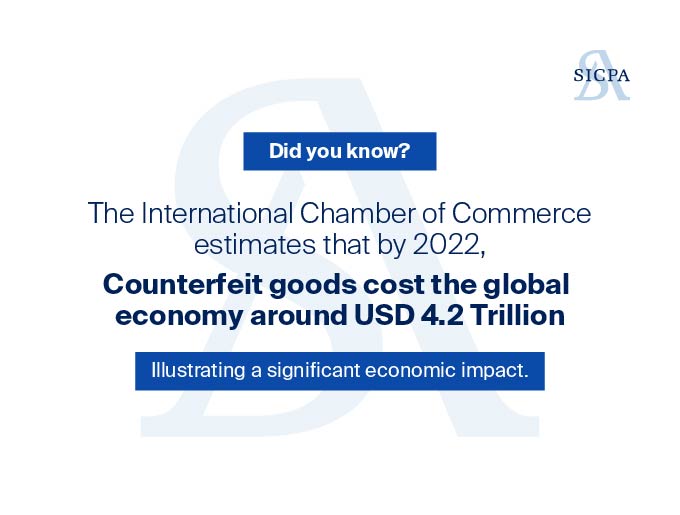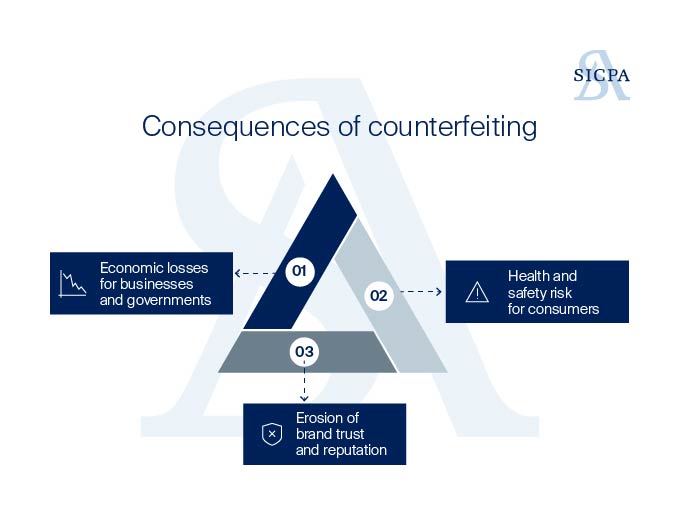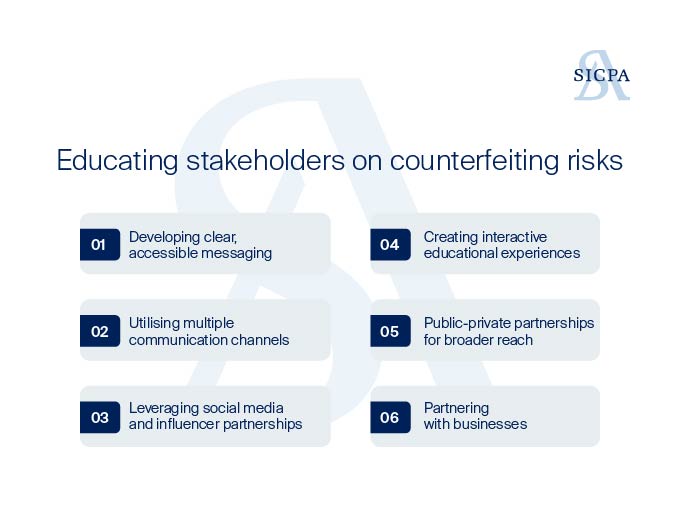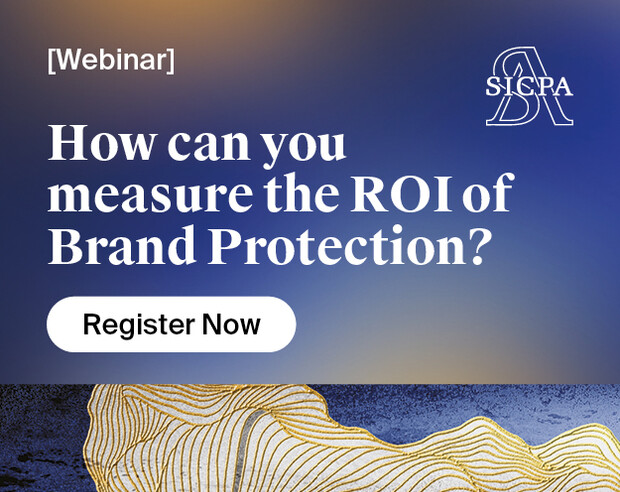
Educating Consumers and Partners on Counterfeiting - Tips and Tactics
The global market faces an increasing threat from counterfeiting, which jeopardises economic stability, consumer safety, and brand integrity. Counterfeiting spans across multiple industries, from luxury goods to pharmaceuticals and cosmetics. The World Customs Organisation estimates that counterfeit goods account for over 3.3% of global trade.
Furthermore, fake products do not just cost businesses and governments billions of dollars in revenue; they endanger consumer health and safety. As counterfeiters leverage digital tools and complex distribution networks, tackling this problem is becoming more challenging day by day.
Given this, it is extremely important for businesses to spread awareness about this global phenomenon among end consumers and partners. This requires careful planning and integrated efforts between manufacturers, distributors, and government authorities. This blog post analyses the current impact of counterfeiting at various levels and dives deep into how manufacturers can educate consumers and partners on its consequences and methods to counter this burning problem.
Understanding Counterfeiting
Counterfeiting involves the unauthorised replication of goods, documents, and currency, intending to deceive consumers and profit from the reputation of established brands. Counterfeit goods often mimic the branding, packaging, and appearance of genuine products, creating significant challenges for consumers trying to differentiate between real and fake.
Counterfeiting can happen for different items such as the following:
- Products: This includes counterfeit luxury goods, electronics, pharmaceuticals, and everyday consumer items.
- Documents: Forged documents such as identity cards, passports, and licenses are common targets, particularly as counterfeiters increasingly use digital methods to replicate government seals.
- Currency: Counterfeit money remains a significant threat to economic stability, impacting both individual businesses and the broader economy.
Technology has not only enhanced legitimate business operations but also provided counterfeiters with sophisticated tools. Advanced printing, 3D modeling, and easy access to digital design tools make it simpler for counterfeiters to produce convincing replicas. Furthermore, e-commerce and social media allow counterfeiters to reach a global audience quickly and anonymously.
Current Statistics and Trends
The rise in counterfeit products correlates with the expansion of e-commerce. Online sales make it easier to reach consumers, allowing counterfeiters to create convincing replicas of genuine items at a fraction of the cost.
Certain sectors are particularly vulnerable, with the pharmaceutical industry experiencing serious counterfeit infiltration. Reports indicate that counterfeit medications constitute up to 10% of drugs globally, presenting a grave health hazard.

Consequences of Counterfeiting
Counterfeiting has a lasting and long-term impact on multiple stakeholders. While a few are monetary, some are far beyond financial losses and often take years to fix or overcome. In this section, let us look at the 3 major consequences of counterfeiting.
1. Economic Losses for Businesses and Governments
The economic repercussions of counterfeiting extend beyond mere financial loss for manufacturers. Governments suffer due to the loss of tax revenue, and the demand for law enforcement resources increases. Counterfeiting also impacts employment, as legitimate manufacturers and retailers may struggle to compete with low-cost replicas, leading to job losses. In the long term, counterfeiting creates a challenging environment for manufacturers to sustain financially.
2. Health and Safety Risks for Consumers
Consumers are the most vulnerable stakeholders affected by counterfeit goods. In the pharmaceutical and healthcare sectors, fake products can lead to serious health risks. Similarly, counterfeit electronics and machinery pose significant safety hazards due to substandard materials and manufacturing processes.
3. Erosion of Brand Trust and Reputation
For brands, counterfeiting not only affects revenue but also damages consumer trust. Repeated incidents of counterfeit goods associated with a brand, even inadvertently, may lead consumers to lose faith in the brand’s quality and reliability.

High-Risk Industries and Products
Luxury Goods and Fashion
Luxury fashion is one of the industries that is most affected as high profit margins make it appealing to counterfeiters. Items like handbags, watches, and designer clothes are replicated and sold to unsuspecting consumers.
Pharmaceuticals and Healthcare Products
Counterfeit pharmaceuticals endanger lives as they often lack proper dosage or contain harmful ingredients. The global spread of online pharmacies has only exacerbated this issue.
Electronics and Technology
Counterfeit electronics, such as smartphones and computers, are not only illegal but also dangerous due to the possibility of burns or explosions caused by faulty parts. These products may also lack warranties, leaving consumers with little recourse for malfunctioning items.
Currency and Official Documents
Counterfeit currency impacts the economy by undermining trust in financial institutions and depreciating currency values. Forged identification documents can lead to serious security breaches and fraud.
Educating Stakeholders on Counterfeiting Risks
Informed consumers, businesses, and governments are essential in tackling counterfeiting. By understanding the methods, motivations, and impacts of counterfeiting, distributors and end consumers can identify counterfeit products faster, report suspicious activities, and implement preventive measures.
This section comprehensively covers the various methods you can deploy to educate consumers and partners on how to identify, report, and act against counterfeiting.

01 - Developing Clear, Accessible Messaging
1. Tailoring Content to Different Demographics
Anti-counterfeiting messages must resonate across demographics. Educational campaigns tailored to specific groups - such as young adults, elderly consumers, or frequent online shoppers—can improve the effectiveness of anti-counterfeiting efforts.
2. Multilingual and Culturally Sensitive Approaches
Counterfeiting is a global issue, and the language of educational materials should reflect this. Offering content in multiple languages and addressing cultural nuances ensures that the anti-counterfeiting message reaches and resonates with diverse audiences.
02 - Utilising Multiple Communication Channels
1. Traditional Media (TV, Radio, Print)
Traditional media remains effective in reaching older audiences and rural populations who may be less exposed to digital media. Television ads, radio announcements, and newspaper articles can help create awareness on a large scale.
2. Digital Platforms (Websites, Social Media, Apps)
Digital platforms offer real-time engagement and educational content distribution opportunities. Social media campaigns using infographics, videos, and testimonials are a great way to educate consumers on counterfeit risks.
03 - Leveraging Social Media and Influencer Partnerships
1. Creating Shareable, Engaging Content
Counterfeiting education efforts benefit from shareable content that can reach a broader audience. Engaging content such as polls, educational videos, and infographics can inform users while encouraging sharing.
2. Collaborating with Trusted Voices in Different Industries
Influencers and industry leaders can amplify anti-counterfeiting messages. By partnering with experts and celebrities, brands can add credibility to their messaging and reach audiences that are typically harder to engage.
04 - Creating Interactive Educational Experiences
1. Virtual and Augmented Reality Demonstrations
Virtual and augmented reality experiences allow consumers to visualise the differences between genuine and counterfeit goods, making the education process more engaging and effective.
2. Gamification of Learning About Counterfeiting
Gamified content, such as quizzes or interactive applications, allows consumers to learn about counterfeiting in an engaging, hands-on manner.
05 - Public-Private Partnerships for Broader Reach
1. Collaborating with Educational Institutions
Incorporating anti-counterfeiting education into school curriculums or university workshops provides young consumers with the knowledge needed to avoid counterfeit goods.
2. Industry-Wide Awareness Campaigns
Collaborative campaigns across industries help raise awareness on a larger scale, leveraging resources from multiple companies to educate consumers.
06 - Partnering with Businesses
1. Implementing Comprehensive Anti-Counterfeiting Measures
Businesses play a critical role in preventing counterfeit goods from reaching consumers. Investing in secure supply chains and traceability systems helps minimise risk.
2. Training Staff to Identify Counterfeits
Employees should be trained to recognise counterfeit products, especially in industries like retail and pharmaceuticals where counterfeiting is prevalent.
3. Collaborating with Product and Brand Protection Solution Providers
SICPA provides specialised solutions, from authentication technology to secure inks and tax stamps, to help businesses protect their products. Collaborating with SICPA or other product and brand protection companies can help counter fake products more effectively.

Government Collaboration: The Role of Governments in Combating Counterfeiting
Legislative Frameworks and Enforcement
Governments should enact and enforce legislation to curb counterfeiting activities. Strong policies and penalties create a deterrent effect, while regulatory agencies oversee compliance. Examples of effective legislation include the Stop Counterfeiting in Manufactured Goods Act in the US and the European Union's Regulation on Customs Enforcement of Intellectual Property Rights.
International Cooperation and Agreements
Given the global nature of counterfeiting, international cooperation is essential. Agreements like the World Trade Organization’s Trade-Related Aspects of Intellectual Property Rights (TRIPS) set standards for intellectual property protection. Collaborative initiatives such as INTERPOL’s Operation Pangea, which targets counterfeit medicines, exemplify how nations can work together to combat these threats.
Case Studies of Successful Government Partnerships
Public Health and Safety Initiatives
Governments have collaborated with SICPA in health sectors to track and authenticate pharmaceuticals. For example, in Brazil, the implementation of a digital tracking system for pharmaceuticals has helped reduce the circulation of counterfeit drugs, significantly enhancing patient safety.
Balancing Security with Privacy Concerns
1. Data Protection Measures
As tracking systems become more prevalent, ensuring that consumer data remains secure is crucial. Governments and organisations must develop robust data protection measures to safeguard personal information while combating counterfeiting.
2. Ethical Considerations in Tracking and Surveillance
The use of technology for tracking must balance the need for security with ethical considerations. Transparent practices in monitoring and consumer data usage are essential to maintain public trust and address concerns over privacy invasion.
Measuring Success and Continuous Improvement
1. Key Performance Indicators for Anti-Counterfeiting Efforts
Establishing clear key performance indicators (KPIs) allows stakeholders to measure the effectiveness of their anti-counterfeiting strategies. Metrics may include the reduction in counterfeit goods identified, the number of consumer reports on counterfeit incidents, and overall changes in brand reputation.
2. Gathering and Analysing Consumer Feedback
Regularly collecting consumer feedback helps organisations refine their educational campaigns and identify emerging counterfeit trends. Engaging consumers in this dialogue creates a more informed public and strengthens trust between businesses and their customers.
3. Adapting Strategies to Evolving Counterfeiting Techniques
Counterfeiting techniques continuously evolve, necessitating that businesses and governments remain vigilant and adaptable. Ongoing research and development into new technologies, alongside constant monitoring of market trends, is essential to stay ahead of counterfeiters.
The Power of Educated Consumers and Partners
1. Creating a Culture of Authenticity
Fostering a culture that values authenticity empowers consumers to make informed decisions. Businesses and governments can work together to promote the importance of purchasing genuine products, thereby reducing the demand for counterfeits.
2. Long-Term Benefits for Society and Economy
By prioritising anti-counterfeiting efforts, stakeholders can help cultivate a safer marketplace that fosters innovation and growth. Authentic products contribute to healthier economies and improve public safety, ultimately benefiting society as a whole.
SICPA's Approach and Commitment to Authenticity and Sovereignty
SICPA is committed to advancing anti-counterfeiting technologies that not only meet current needs but anticipate future challenges.
The fight against counterfeiting requires a collective approach involving consumers, businesses, governments, and providers of authenticated security solutions. By working together, stakeholders can implement comprehensive strategies to protect authenticity, ensure safety, and support economic stability.
In conclusion, combating counterfeiting is an ongoing battle that requires vigilance, education, and collaboration. By understanding the nature of counterfeiting, educating consumers, and fostering partnerships between the public and private sectors, we can protect our economy, our brands, and most importantly, our consumers from the threats posed by counterfeit goods.
The Brand Protection Insider, by SICPA
Stay ahead in the fight against illegitimate trade with “The Brand Protection Insider” newsletter, by SICPA.
Receive quarterly the Product and Brand Protection newsletter - latest insights, innovative solutions, and expert advice directly to your inbox.
Join our community and build a safer, more reliable future for trade and commerce.
Sign up today!





